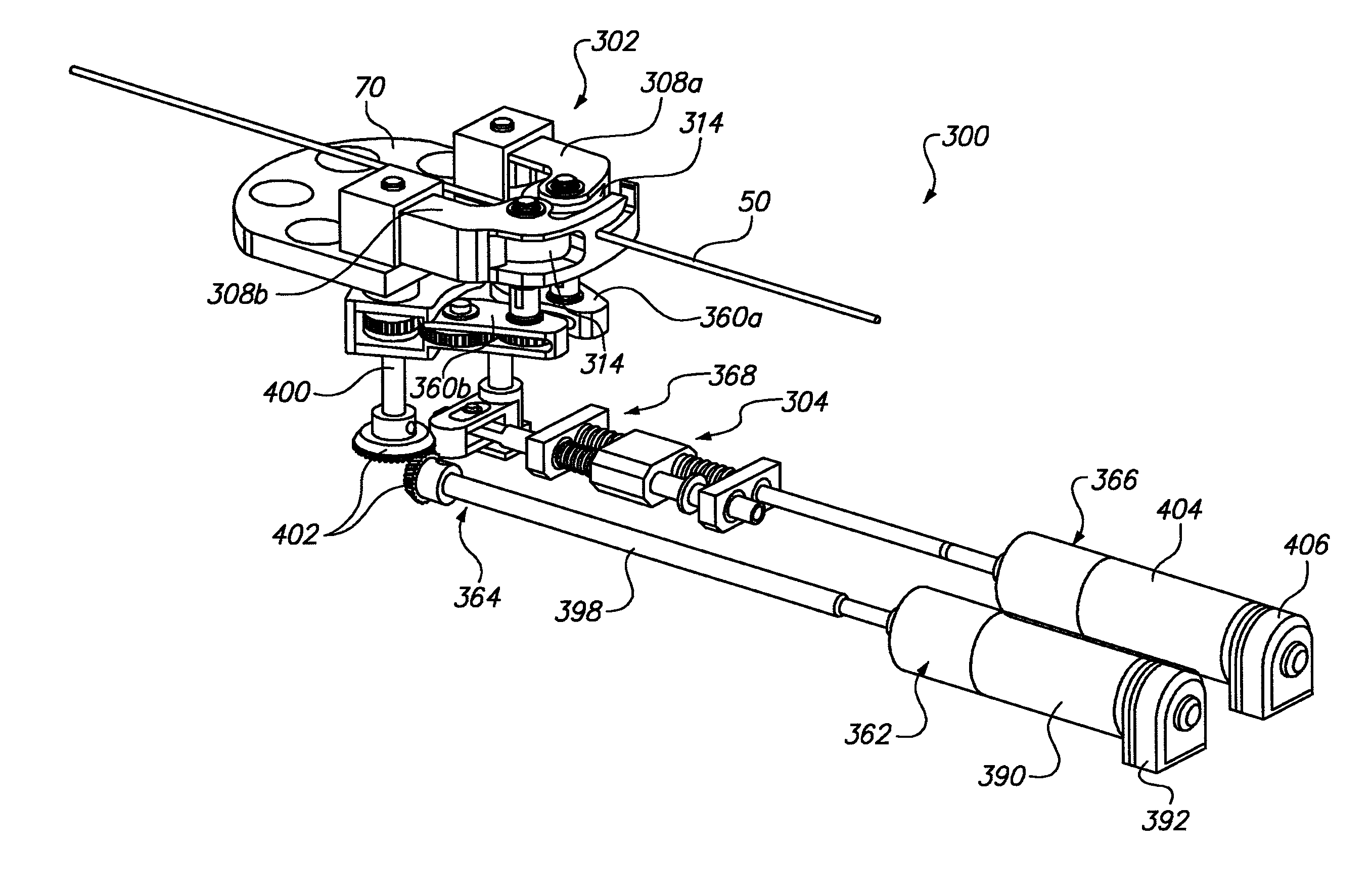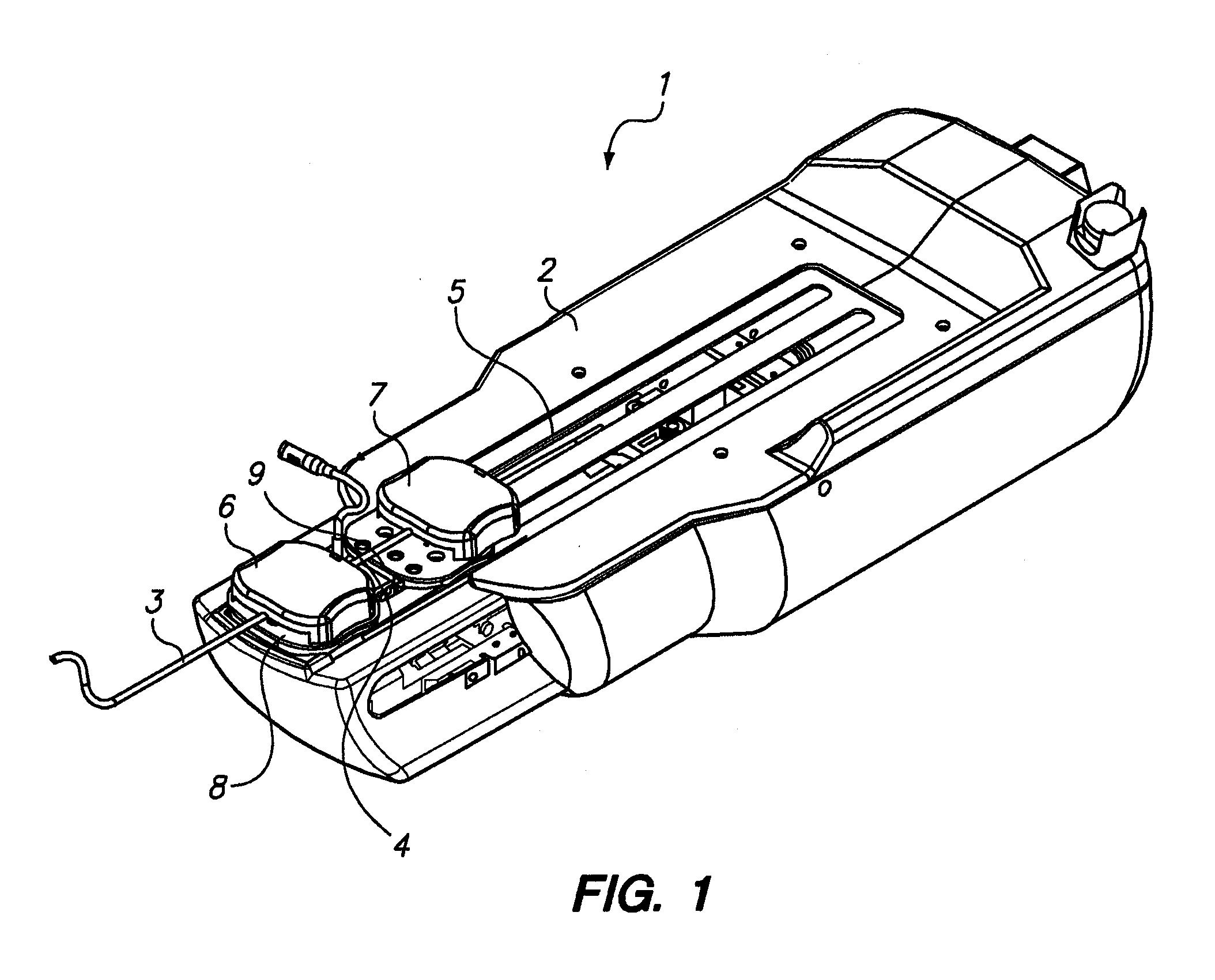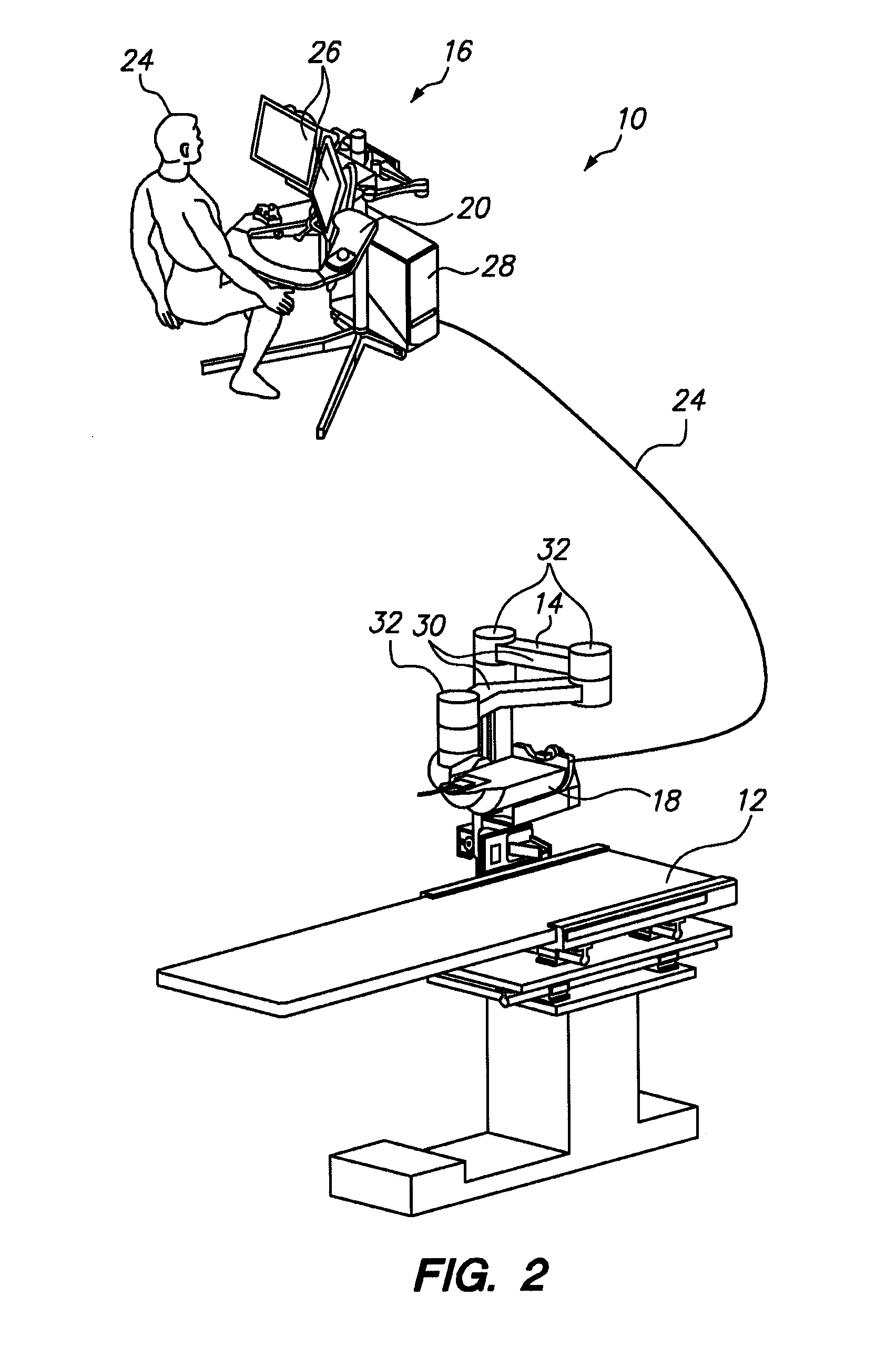Active drives for robotic catheter manipulators
a robotic catheter and active drive technology, applied in the field of robotic catheter manipulators, can solve the problems of increasing the complexity of the robotic catheter system, affecting the installation efficiency of the medical personnel, and the cumbersome installation of the anti-buckling device, etc., to facilitate the folding or collapsing and facilitate the unfolding or expansion of the sterile drape.
- Summary
- Abstract
- Description
- Claims
- Application Information
AI Technical Summary
Benefits of technology
Problems solved by technology
Method used
Image
Examples
Embodiment Construction
[0098]Referring to FIG. 2, one embodiment of a robotic catheter system 10 constructed in accordance with the present invention will now be described. The system 10 generally comprises an operating table 12 having a movable support-arm assembly 14, an operator control station 16 located remotely from the operating table 12, and a robotic catheter assembly 18 mounted to the support-arm assembly 14 above the operating table 12. Exemplary robotic catheter systems that may be modified for constructing and using embodiments of the present invention are disclosed in detail in the following U.S. patent applications, which are all expressly incorporated herein by reference in their entirety: U.S. patent application Ser. No. 11 / 678,001, filed Feb. 22, 2007; U.S. patent application Ser. No. 11 / 073,363, filed Mar. 4, 2005; U.S. patent application Ser. No. 11 / 179,007, filed Jul. 6, 2005; U.S. patent application Ser. No. 11 / 418,398, filed May 3, 2006; U.S. patent application Ser. No. 11 / 481,433, ...
PUM
 Login to View More
Login to View More Abstract
Description
Claims
Application Information
 Login to View More
Login to View More - R&D
- Intellectual Property
- Life Sciences
- Materials
- Tech Scout
- Unparalleled Data Quality
- Higher Quality Content
- 60% Fewer Hallucinations
Browse by: Latest US Patents, China's latest patents, Technical Efficacy Thesaurus, Application Domain, Technology Topic, Popular Technical Reports.
© 2025 PatSnap. All rights reserved.Legal|Privacy policy|Modern Slavery Act Transparency Statement|Sitemap|About US| Contact US: help@patsnap.com



